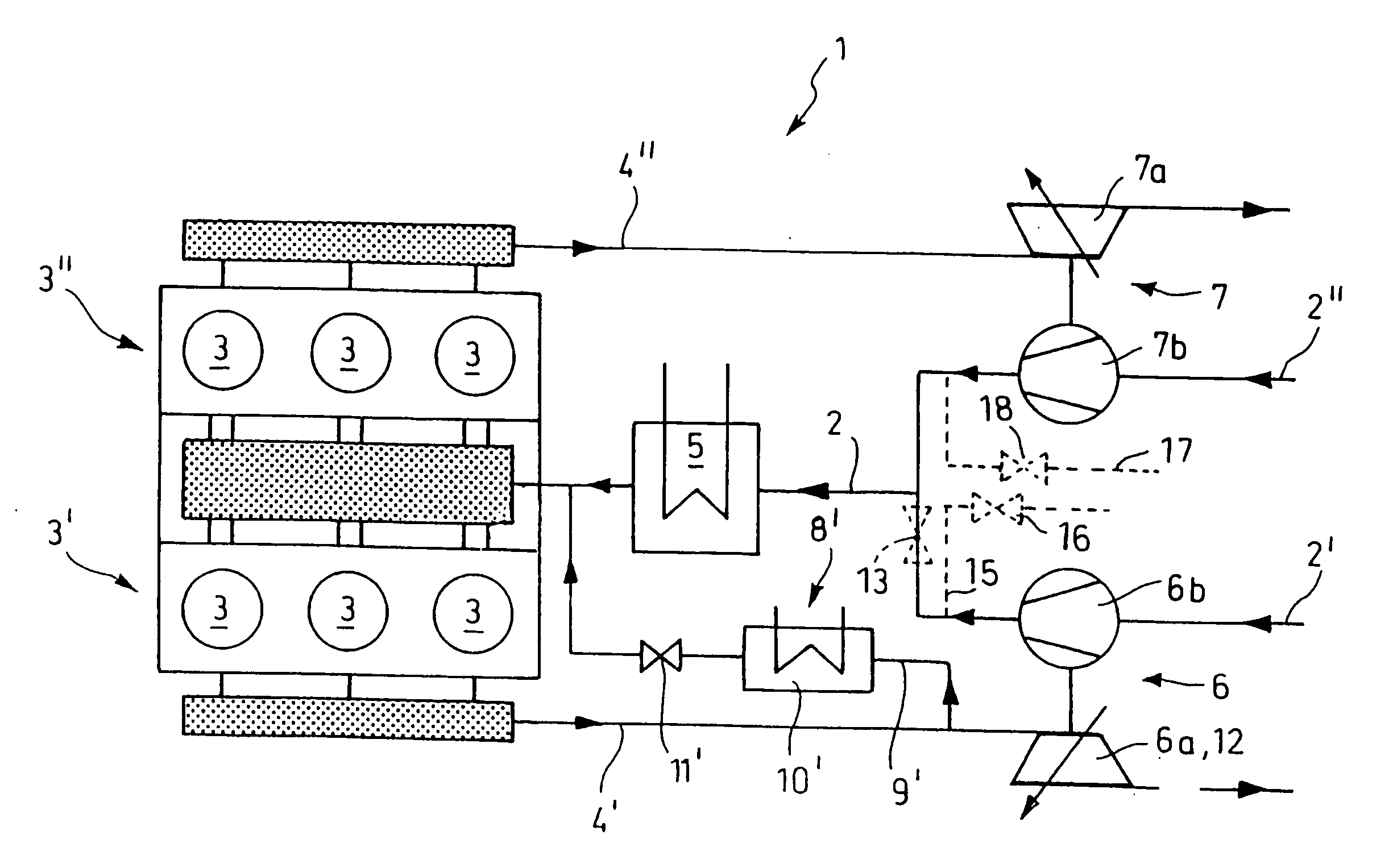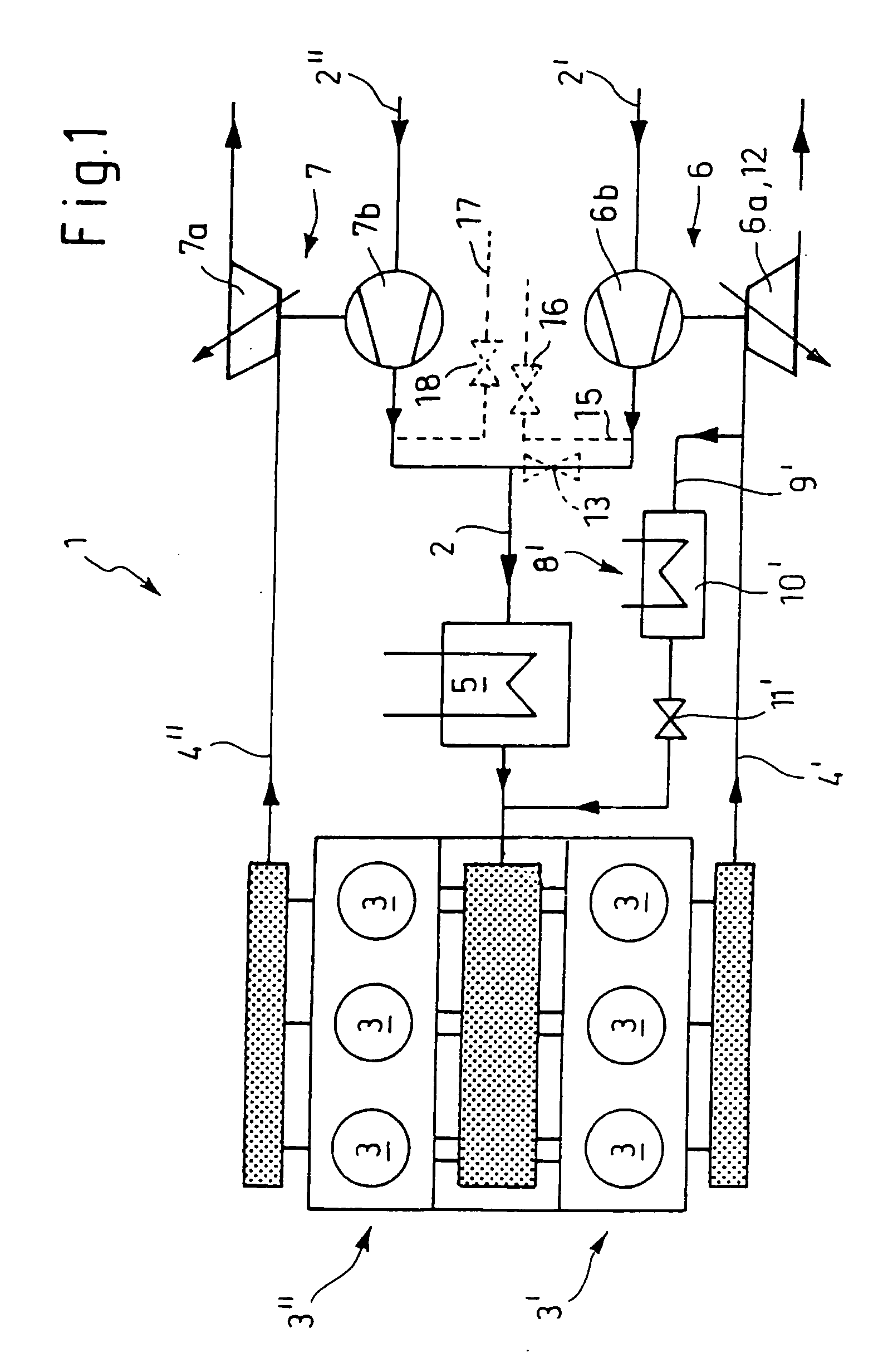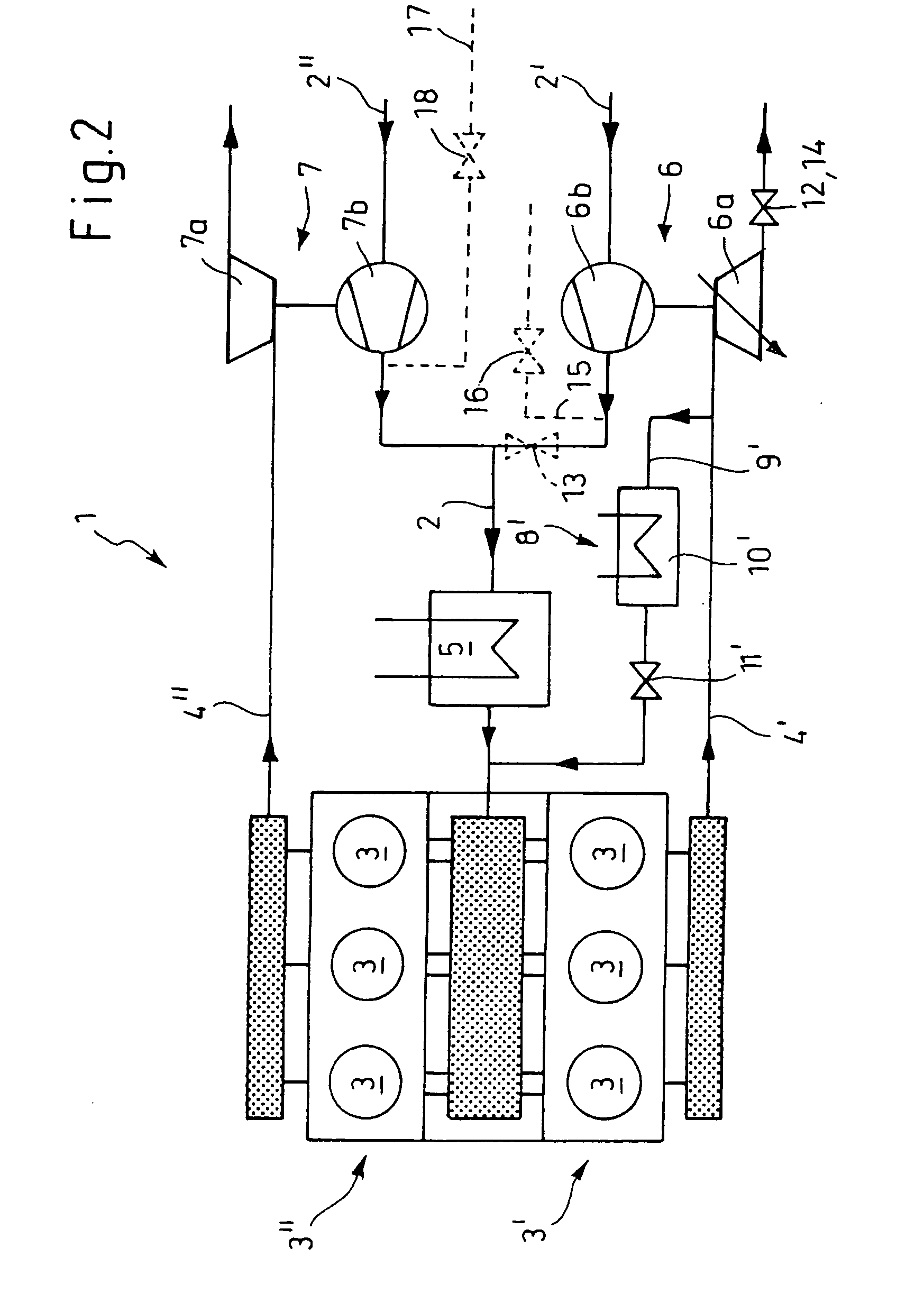Method and system for influencing the quantity of exhaust gas recirculated in a pressure charged internal combustion engine
a pressure-charged internal combustion engine and quantity technology, applied in the direction of machines/engines, mechanical equipment, non-fuel substance addition to fuel, etc., can solve the problems of reducing the power provided, adversely affecting efficiency, and achieving discernible increase in power output, so as to increase the quality and flexibility of pressure charging and high boost pressure
- Summary
- Abstract
- Description
- Claims
- Application Information
AI Technical Summary
Benefits of technology
Problems solved by technology
Method used
Image
Examples
first embodiment
[0093]FIG. 1 shows the pressure charged internal combustion engine 1, taking a six-cylinder V-engine as an example. The cylinders 3 of the internal combustion engine 1 are divided into two groups of cylinders 3′, 3″, which each have a separate exhaust line 4′, 4″, which is in each case not connected to the other exhaust line 4′, 4″.
[0094] Two exhaust-gas turbochargers 6, 7 connected in parallel are provided, the first turbine 6a of the first exhaust-gas turbocharger 6 being arranged in the first exhaust line 4′ of the first group of cylinders 3′ and the second turbine 7a of the second exhaust-gas turbocharger 7 being arranged in the second exhaust line 4″ of the second group of cylinders 3″.
[0095] The compressors 6b, 7b coupled to these turbines 6a, 7a are likewise arranged in separate intake lines 2′, 2″, which downstream of the compressors 6b, 7b converge to form an intake manifold 2 and which serve to supply the internal combustion engine 1 with fresh air or fresh mixture.
[0096...
second embodiment
[0106]FIG. 2 shows a schematic representation of the pressure charged internal combustion engine 1. Only those aspects distinguishing it from the embodiment represented in FIG. 1 will be discussed, for which reason reference will otherwise be made to FIG. 1. The same reference numerals have been used for the same components.
[0107] In contrast to the embodiment represented in FIG. 1, the second turbine 7a in the internal combustion engine 1 represented in FIG. 2 is designed with a fixed, that is to say a non-variable turbine geometry. In contrast to the embodiment of the turbine with variable turbine geometry (VTG) previously described, the design principle here dispenses with any control. Overall, this embodiment in particular has cost advantages.
[0108] A further difference compared to the embodiment according to FIG. 1 is that a separate shut-off element 14 is provided in the first exhaust line 2′ downstream of the first turbine 6a to influence the exhaust gas back-pressure. The s...
third embodiment
[0109]FIG. 3 shows a schematic representation of the pressure charged internal combustion engine 1. Only those aspects distinguishing it from the embodiment represented in FIG. 2 will be discussed, for which reason reference will otherwise be made to FIG. 2. The same reference numerals have been used for the same components.
[0110] In contrast to the embodiment represented in FIG. 2 in the internal combustion engine 1 represented in FIG. 3 the first turbine 6a is likewise designed with a fixed, that is to say a non-variable turbine geometry, which again has cost advantages owing to the more economical type of turbine and to the absence of an expensive control.
PUM
 Login to View More
Login to View More Abstract
Description
Claims
Application Information
 Login to View More
Login to View More - R&D
- Intellectual Property
- Life Sciences
- Materials
- Tech Scout
- Unparalleled Data Quality
- Higher Quality Content
- 60% Fewer Hallucinations
Browse by: Latest US Patents, China's latest patents, Technical Efficacy Thesaurus, Application Domain, Technology Topic, Popular Technical Reports.
© 2025 PatSnap. All rights reserved.Legal|Privacy policy|Modern Slavery Act Transparency Statement|Sitemap|About US| Contact US: help@patsnap.com



